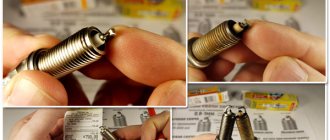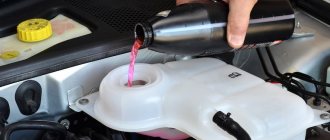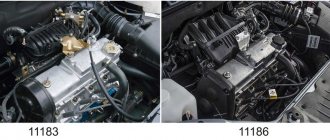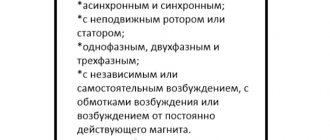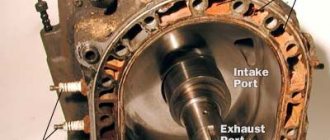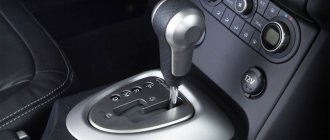The GDI (Gasoline Direct Injection) engine is a gasoline power unit with direct fuel injection. Motors with the abbreviation GDI are produced by Japanese companies Mitsubishi, Toyota, Nissan, Korean automakers, as well as Bosh.
We also recommend reading the article about what a TSI engine is. From this article you will learn about the features, pros and cons of motors of this type.
The idea of building an engine with direct fuel injection into the cylinders was born quite a long time ago, while mass GDI was first introduced only in 1995. Motors with GDI technology are mostly found on Mitsubishi cars. The first model with such a power unit was the Mitsubishi Galant, which received a 1.8 GDI power unit.
Characteristic
This abbreviation means injection directly into the combustion chamber. Here are the cars the GDI engine is used on:
- "Mitsubishi".
- "Kia".
- "Cadillac".
- "Volkswagen".
- "Toyota".
- “Lexus.
- "Mercedes".
- "BMW".
A conventional injection engine has a manifold mixture formation system. So, a ready-made airless composition is supplied to the cylinders. Mixing occurs in the intake manifold, on which the injectors are mounted. The latter are controlled electronically. But there are also models where the injectors operate mechanically (for example, old Mercedes with the K-Jetronic system). What is a GDI engine?
Costs per 100 thousand km
| Automobile | Kia CEE'D |
| Mileage | 100,722 km |
| Insurance | 975 Euro |
| Fuel and oil | |
| 8366 liters of gasoline (1.18 Euro per liter / 84.25 rubles) | 9842 Euro |
| 0.75 liters of engine oil, for replenishment | 11 Euro |
| Tires | |
| Summer: 1 set. Continental Premium Contact 2 205/55 R 16 H | 295 Euro (21,063 rubles) |
| Winter: 1 set. Dunlop SP Winter Sport 4D 205/55 R 16 H | 372 Euro (26,560 rubles) |
| THAT | |
| 30,000 km | 205 Euro |
| 60,000 km | 271 Euro |
| 90,000 km | 215 euros |
| Total cost of service | 691 Euro |
| Price | |
| Price of the basic version M 1.6 GDI (2013) Price of the test version of XL 1.6 GDI (2013) | 15,265 Euro (1,089,921 rubles) 19,762 Euro (1,411,007 rubles) |
| Market value in current state | 12,450 euros |
| Loss in price | 7312 Euro |
| Total expenses | |
| Cost 100,722 km | 12,543 euros |
| Cost 1 km | 0.13 Euro (9.28 RUR) |
| Cost of 1 km including depreciation | 0.20 Euro (14.28 RUR) |
Differences
Unlike the units described above, this motor has a nozzle directed directly into the combustion chamber. A similar system is practiced on diesel engines with the Common Rail system. However, here gasoline is supplied to the cylinders. The air supply is carried out through the intake valves, which open and close at a certain moment (according to the rotation of the camshaft). Thus, the key difference between a GDI engine and a conventional injection engine is that the mixture is formed directly in the cylinder, and not in the manifold.
Details in details
— The front passenger was periodically unnerved by knocking and crackling noises. Source{q} Incorrectly adjusted glove box lid and loose glasses holder.
— It may be a small thing, but it was annoying - the trunk upholstery looked worn out by 50,000 km.
https://www.youtube.com/watch{q}v=ytdevru
— The quality of body painting is very good. The varnish is applied evenly. The measured coating thickness is from 95 to 120 microns. This is a good result!
— Anti-corrosion protection is very effective. Rust has no chance of appearing.
— The engine is really durable and simple. The two camshafts in the cylinder head are driven by a chain. Hunters of technical tricks will die of boredom. But the most important thing is that in terms of strength there is nothing to complain about.
— Despite the loss of several horsepower, the engine shows no signs of wear. It’s a pity that the final measurement showed a shortage of 7 hp compared to the factory data.
— Several minor damages were found in the catalyst, but it functioned without any complaints.
— The clutch shows signs of wear. Traces of overheating and damage are clearly visible. This indicates the dynamic nature of testing and the low quality of the node.
Peculiarities
Of course, creating the ideal mixture ratio is quite difficult under such conditions. Therefore, an electronic unit with software is additionally involved in the work. It is designed for several different operating cycles. Also, the features lie in the nozzles themselves. To obtain ideal mixture formation, manufacturers use vortex nozzles. They are capable of injecting fuel in the form of a fine mist.
The next feature of the GDI engine is the mixture ratio. If we talk about classic injection engines, there are 14 parts of air for one part of gasoline. The GDI engine produces a lean mixture, where there are 20 portions of air per portion of fuel. But with this ratio, the engine cannot always operate at full power. Therefore, if necessary, the composition of the mixture is adjusted. So, the ratio of gasoline and air can be the same as for engines with distributed injection - 1:14. The change in the mixture composition is facilitated by a two-stage fuel supply system.
Basic concept
In conventional gasoline engines, it would be difficult to ensure that the air-fuel mixture is sprayed at an ideal density around the spark plug. However, this is made possible in the GDI engine. In addition, extremely low fuel consumption is achieved because ideal stratification allows fuel introduced late in the compression stroke to support the combustion of ultra-lean air-fuel mixtures.
During engine testing, it was shown that the air-fuel mixture with optimal density is collected around the spark plug in the form of a stratified fuel charge. This was also confirmed by analyzing the behavior of the fuel jet immediately before ignition and analyzing the instantaneous composition of the air-fuel mixture.
The result is extremely stable ultra-lean combustion with an air-fuel ratio of 40:1 (55:1 when EGR is turned on).
Advantages
So, let's look at the advantages of these power units:
- Fuel economy. This characteristic is achieved due to the formation of a leaner mixture, as discussed above. So, in the absence of loads, the engine runs on a lean mixture. However, when it is necessary to use its full potential, its composition changes to normal. Due to the two-stage fuel supply, the car saves about 25 percent at idle speed. If we take normal driving, then such an engine will consume about 10 percent less fuel than one equipped with distributed injection.
- Proper combustion of fuel. Experts note that the highest quality ignition and combustion of the mixture will occur if the fuel is in close proximity to the spark plug. So, gasoline burns completely in the cylinders, and the return from this is maximum. It is also worth noting the FSI layer-by-layer direct injection technology. It is used on Volkswagen cars. Subsequently, this technology was picked up by other manufacturers, including Kia. Korean-made GDI engines are distinguished by high performance and have a wide torque shelf, which simple injection engines do not have.
- Less exhaust toxicity. This characteristic is closely related to the previous two. Reviews from experts say that engines with direct injection emit much less harmful substances than their counterparts (especially at idle speed).
- Power. Thanks to more correct combustion, engineers were able to extract 10 percent more power from the same volume than from an internal combustion engine with distributed injection. GDI engines also have a higher compression ratio. This has a positive effect on torque.
- Less soot. As reviews note, these motors do not emit significant carbon deposits during operation. Oil channels are not clogged with combustion products. Accordingly, these engines last longer than simple injection engines. GDI engines also have cleaner oil.
But not everything is as smooth as it seems. These engines have their drawbacks that are definitely worth talking about.
Short description
A software object called Device Context (DC) is used to define the text and image attributes that are displayed on the screen or printer. A DC, like most GDI objects, encapsulates implementation details and data within itself and cannot be accessed directly.
For any drawing you need an HDC (Handle DC) object. When outputting to a printer, the HDC is obtained by calling CreateDC, and special functions are called on it to move to a new page of the printed document. When displaying on the screen, you can also use CreateDC, but this will lead to drawing on top of all windows outside their borders, so usually for drawing on the screen, calls to GetDC and BeginPaint are used, which no longer belong to GDI, but to USER, and return a context referencing the window's clipping region .
Functionality:
- output by the same calls to the screen, printer, “screen in memory” (accessible to the application by pointer and the bitmap created by it in memory, it is also possible to allocate bitmaps in the memory of the video card - CreateCompatibleBitmap - and draw on them, such bitmaps are not accessible by pointer , but further redrawing from them to the physical screen occurs very quickly without loading the processor and bus, and especially quickly in the case of Remote Desktop).
- output to a metafile - storing a sequence of drawing commands in a file that can be “played” again; a vector graphics file .wmf is exactly this metafile with a small additional header at the beginning.
- text output in various fonts, including TrueType and OpenType, as well as fonts embedded in the printer (when displaying a document on the screen, the closest similar software-implemented font is used). Letters are always filled with one color (“current color”), the spaces between them either remain transparent or are filled with a different color (“current background color”). Arranging letters along a curve is not supported.
- a rich set of operations with bitmaps (bitmaps), including scaling, automatic conversion from typical formats to the current screen format without effort on the part of the programmer (StretchDIBits), drawing on bitmaps of several typical formats residing in memory, and a huge number of logical color combination operations 2 bitmaps - already existing on the destination device and drawn again.
- a rich set of vector graphics operations (about the same as in PostScript, but a different type of curves is used). The drawn line has attributes - thickness, dash pattern and color (collected together in the so-called PEN object) and a way to smooth the corners of polygons. The fill can be a single color, one of your choice of hatches, or an 8 by 8 bitmap (these attributes are collected in a “BRUSH object”). Windows NT also introduced Bezier curves.
- all colors in calls are always in RGB, regardless of the color system of the current device. The exception is individual pixels inside bitmaps, which can also be in the form defined by the device.
- support for clipping regions and all basic logical operations on them. The coordinates in them are 16-bit integers (which limited the screen size of Windows, even fairly recent versions, to 32K pixels).
- support for rotation/stretch matrix - World Transform, not supported for clipping regions, only for vector graphics.
Minuses
The first drawback concerns the design of the system. Direct injection engines have a more complex intake system. This includes a fuel injection pump (high pressure fuel pump), which is similar in design to that used on modern diesel internal combustion engines. Because of this, cars with GDI injection are more demanding on fuel quality, like their diesel counterparts. The following components are especially harmful to this motor:
- Sulfur.
- Phosphorus.
- Iron and other minerals.
All of them can be found in cheap, low-quality gasoline. As reviews note, the GDI engine is very afraid of particulate matter, since the fuel passes through extremely thin holes. They clog easily if low-quality gasoline is used.
It is also important to maintain the octane rating. The instruction manual states that this engine runs on gasoline with an octane rating of 100, which is very rarely found in Russia. At a minimum, such cars should be filled with fuel with an OC of at least 98. And an attempt to fill with 95 will be accompanied by characteristic vibrations in the body. Also, various cleaners, additives and additives are contraindicated for these engines. It is also prohibited to use leaded gasoline.
The next drawback concerns service. There are few services in Russia that specialize in such engines. And if there are no problems with the repair of the Common Rail, then problems may arise with finding a service station that can repair the GDI motor.
Repairing such an engine is not as easy as a conventional internal combustion engine with distributed injection. The difficulties lie not only in the high-pressure fuel pump, but also in the two-stage fuel supply system. And each manufacturer has its own specific breakdowns. We will talk about them below.
Which system is better for a simple driver?
Disadvantages of Jidai engines
- Increased requirements for gasoline quality.
- Coking of the intake valves, since they are not washed by fuel, as happens with multi-point injection.
- Carbon deposits forming on fuel injector nozzles. They need to be cleaned and checked more often. Because they are designed for high pressure, not all fasteners can flush them completely. Replacement of injector O-rings and accompanying hemorrhoids.
- High cost of maintenance of the HDI injection system and its repair.
pros
- Economic efficiency;
- Efficiency and high power per gram of fuel up to 15%;
- Kindness to the environment.
Engine 4G93 GDI
It is worth talking about it separately. What kind of motor is this? The 4G93 is a two-liter four-cylinder unit that has been in mass production for 20 years. Maximum power, depending on modifications, is from 160 to 215 horsepower. Initially it was carburetor and then injection. In the early 2000s, this engine was equipped with direct injection. The unit has a two-shaft cylinder head with a timing belt drive. The motor is also equipped with hydraulic compensators.
As reviews note, the Mitsubishi GDI engine may have problems with the pumps. There are only two of them. This is a low and high pressure fuel pump. Often problems arise with the latter. Thus, the fuel injection pump becomes clogged with solid particles found in the fuel. As a result, the car stalls when you press the gas pedal and during any attempts to accelerate. At the same time, at idle speed, Mitsubishi GDI engines can behave normally. In such a situation, detailed diagnostics and cleaning of the pump elements is required.
Among other problems of this motor it is worth noting:
- Problems with the gas recirculation valve. The intake manifold on this engine requires regular cleaning.
- Filling spark plugs. This happens in severe frosts when trying to start the engine “cold”.
- Engine knock. This happens due to faulty hydraulic compensators. Because of this, the valve clearance is not normal.
Emission control
Previous attempts to burn lean air-fuel mixtures have led to difficulties in controlling NOx emissions. However, the GDI engine achieves a 97% NOx reduction using a high level of exhaust gas recirculation (EGR) of around 30%. This result is achieved thanks to the uniquely stable combustion of fuel in the GDI engine, as well as the newly developed lean nitrogen oxide catalyst. The figure shows the NOx emissions graph for this engine, the figure below shows the lean nitrogen oxide catalyst.
Rice. Nitrogen oxide emissions
Rice. Newest Lean Nitrogen Oxide Catalyst
Let's sum it up
So, we found out what a direct injection engine is. As you can see, the GDI motor has both a number of positive and negative aspects. Is it worth buying such a car? There is no clear answer to this question. Yes, these engines are more powerful, environmentally friendly and consume less fuel. At the same time, not every service undertakes to service them, and the cost of repairs will always be significant. You need to constantly refuel at proven gas stations so that solid particles do not clog the thin cavities of the high-pressure pump. Therefore, the operation of cars with a GDI engine is advisable only in large cities where there are high-quality gas stations and specialized workshops. In other cases, maintaining such a car will be problematic.
Implementation
In Windows 9x and earlier, it is implemented in a 16-bit GDI.DLL, which, in turn, loads the video card driver implemented as a DLL. The video card driver was originally required to implement all drawing, including drawing through bitmaps in memory in the screen format. Later, DIBENG.DLL appeared, which implemented drawing on bitmaps of typical formats; the driver was obliged to pass all calls into it, except for those for which it used the hardware accelerator of the video card.
The printer driver was loaded in the same way and had the same interface “from above”, but “from below”, instead of drawing in memory/hardware, it generated sequences of printer commands and sent them to the Job object. These commands were typically either binary and non-human readable or PostScript.
In Windows NT, GDI was completely rewritten from scratch, and in C++ (according to rumors, Microsoft did not have a compiler for this language at that time and they used cfront). The API for applications has not changed (except for the addition of Bezier curves), for drivers - wrappers in the C language around internals implemented in C++ (like BRUSHOBJ_pvGetRbrush).
GDI itself was first located in WINSRV.DLL in the CSRSS.EXE process, starting with NT4 - in win32k.sys. The drivers were loaded there too. DIBENG.DLL was rewritten and moved there, as well as a set of EngXxx calls - EngTextOut and others. The driver-GDI-DIBENG interaction logic remains approximately the same.
GDI32.DLL in user mode is implemented as a set of special system calls leading to win32k.sys (before NT4 - as a wrapper around the CsrClientCallServer call that sent a message to CSRSS.EXE).
Windows Vista introduced the WDDM driver model, which removed the ability to use 2D graphics hardware. When using WDDM, all GDI applications (that is, all the usual system parts of the Windows UI - window headers and frames, desktop, taskbar, etc.) use the GDI driver cdd.dll (Canonical Display Driver), which draws on some bitmaps in memory , their own for each window (the contents of the window began to be remembered in memory, before Windows had never done this and always redrawn the windows anew, except for some special windows with the CS_SAVEBITS flag). The images from cdd.dll are retrieved by the dwm.exe (Desktop Window Manager) process, which is a Direct3D application that renders “window pictures” on the physical screen via Direct3D.
The WDDM driver itself only supports DirectDraw and Direct3D and has nothing to do with GDI or win32k.sys, being interfaced with the dxgkrnl.sys module in the kernel.
